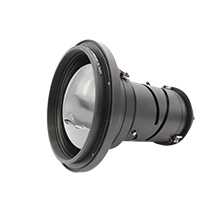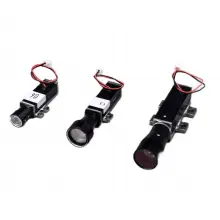What Does the World's First 8μm 1920x1080 Thermal Imaging Detector Mean?

The world of thermal imaging technology has witnessed a significant breakthrough with the emergence of the InfiRay 8μm 1920x1080 thermal imaging detector. This revolutionary advancement has captivated the attention of tech enthusiasts and professionals alike, thanks to its pioneering attributes and the new possibilities it opens up. In this blog post, we will delve into the meaning and significance of the world's first 8μm thermal imaging detector, shedding light on the technological breakthrough it represents and the wide range of applications it promises to transform.
At the heart of the InfiRay 8μm 1920x1080 thermal imaging detector lies a technological breakthrough that centers around two critical aspects: pixel size and resolution.
1. Pixel Size: The 8μm pixel size is a pivotal achievement in thermal imaging. Pixel size directly impacts the detector's sensitivity to thermal radiation. Smaller pixel sizes allow for greater pixel density on the sensor, enabling it to capture more detailed thermal information. By achieving an 8μm pixel size, InfiRay has surpassed the industry standard, which was traditionally around 12μm or even larger. This leap in pixel miniaturization translates to improved image quality and accuracy, especially in detecting subtle temperature variations.
2. Resolution: The 1920x1080 resolution of the InfiRay thermal imaging detector translates to Full HD quality thermal images. The combination of high resolution and smaller pixel size results in sharper, more precise images, which is crucial in applications where intricate details matter. Whether it's for surveillance, industrial inspection, or medical diagnosis, this enhanced resolution offers an unparalleled level of clarity that was previously unattainable in the world of thermal imaging.
The impact of the InfiRay 8μm 1920x1080 thermal imaging detector reverberates across various industries and sectors, introducing transformative possibilities that were once constrained by limitations in technology.

1. Industrial Inspection: In sectors like manufacturing and energy, InfiRay thermal imaging detector's breakthrough enables more accurate and reliable detection of anomalies, defects, and inefficiencies. The high resolution and sensitivity empower professionals to identify issues in machinery, electrical systems, and pipelines with exceptional precision. This, in turn, reduces downtime, enhances maintenance practices, and improves overall operational efficiency.
2. Security and Surveillance: Security applications benefit immensely from the thermal imaging detector's enhanced capabilities. With finer details and improved image quality, security personnel can detect intruders, monitor perimeters, and ensure public safety more effectively. The smaller pixel size allows for better facial recognition even in low-light conditions, offering a new level of accuracy in surveillance.
3. Medical Diagnosis: In the realm of healthcare, the InfiRay detector holds promise for non-invasive diagnostics. Its high resolution and sensitivity could be employed for early detection of diseases by identifying temperature anomalies in the human body. Medical professionals could potentially utilize thermal imaging as a supplementary diagnostic tool, aiding in the detection of conditions ranging from inflammation to circulatory issues.

4. Research and Development: The scientific community stands to gain from this breakthrough as well. Researchers can utilize the detector to study thermal patterns in various fields, such as material science, environmental monitoring, and wildlife conservation. The heightened precision in thermal data collection opens doors to new insights and discoveries that could reshape our understanding of natural phenomena.
The introduction of the InfiRay 8μm 1920x1080 thermal imaging detector is more than a mere advancement in technology; it's a paradigm shift. This groundbreaking achievement in pixel size and resolution has unlocked unprecedented potential across industries and applications. From elevating industrial efficiency to fortifying security measures, and from redefining medical diagnostics to empowering scientific exploration, this innovation has far-reaching implications that extend well beyond its technical specifications. As we embrace the era of the world's first 8μm thermal imaging detector, we can anticipate a wave of transformation that will shape the way we perceive and interact with thermal information.

















